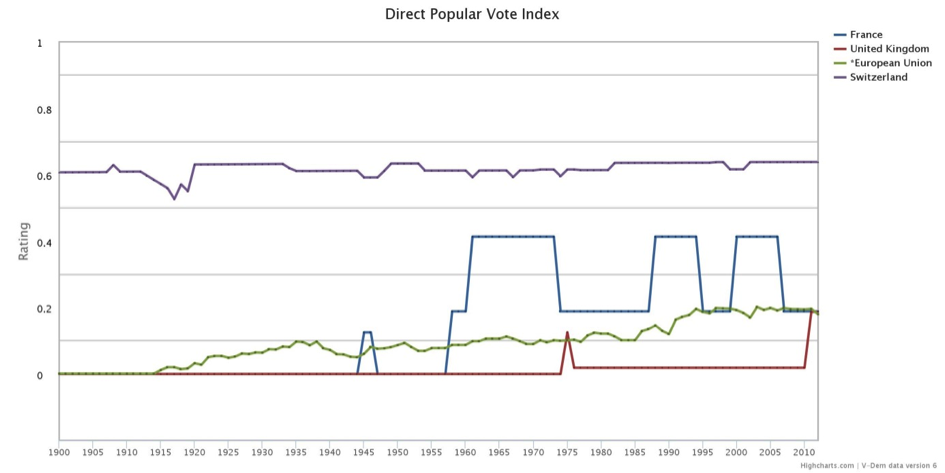Referendums in the Europe
By: V-Dem Staff
Nov 28, 2016
Since referendums and other popular initiatives are central to direct forms of democracy, this week we examine V-Dem’s Direct Popular Vote Index.
With the Variable Graph tool we compare the development of the Direct Popular Vote Index in the UK, France, and Switzerland, and then we also look at the average among EU countries. The Direct Popular Vote Index measures how easy it is to initiate and approve direct popular vote and how consequential that vote is, if approved. A higher value indicates it being easier to initiate and approve a vote.
The UK has a lower value than France, Switzerland and the EU average on V-Dem’s Direct Popular Vote index. Referendums are very rare in the UK, where only two have been held prior to this year’s Brexit referendum, in 1975 and 2010. Well known for its system of direct democracy and numerous referendums Switzerland has by far the highest score. In France, the referendum was reintroduced by General de Gaulle in 1945 and, since the establishment of the Fifth Republic in 1958, it has been enshrined in the constitution as a means of exercising sovereignty. A national legislative referendum can be initiated by the President on a proposal by the Cabinet or the Parliament. It remains to be seen if France will have a referendum on exiting the EU, as Marine le Pen has proposed, but it is certainly possible.
You can find out more about referendums in other countries by using the online analysis tool at v-dem.net.


